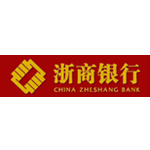HUA XIA BANK(600015)
Search documents
华夏银行(600015) - 华夏银行第九届董事会第十一次会议决议公告
2025-09-28 08:15
A 股代码:600015 A 股简称:华夏银行 编号:2025—50 华夏银行股份有限公司 第九届董事会第十一次会议决议公告 本行董事会及全体董事保证本公告内容不存在任何虚假记载、误导性陈述或 者重大遗漏,并对其内容的真实性、准确性和完整性承担法律责任。 华夏银行股份有限公司(以下简称"华夏银行")第九届董事会第十一次会 议以书面传签方式召开,会议通知和材料于 2025 年 9 月 19 日以电子邮件方式发 出,会议补充通知和材料于 2025 年 9 月 23 日以电子邮件方式发出,表决截止日 期为 2025 年 9 月 28 日。会议应发出书面传签表决票 14 份,实际发出书面传签 表决票 14 份,在规定时间内收回有效表决票 14 份。会议的召开符合《中华人民 共和国公司法》等法律、行政法规、部门规章、规范性文件及《华夏银行股份有 限公司章程》的有关规定,会议合法有效。经与会董事审议,做出如下决议: 一、审议并通过《关于申设华夏银行资金运营中心的议案》。 表决结果:赞成 14 票,反对 0 票,弃权 0 票。 二、审议并通过《关于华夏银行总行部分部门组织机构调整优化的议案》。 表决结果:赞成 14 票,反 ...
华夏银行App是否带来新突破?互动体验有提升,但产品购买流程待优化
Xin Lang Cai Jing· 2025-09-28 07:15
| 日常登录 | App支持手机号 身份证号 银行卡号登录,也支持微信、支付宝等授权 | | --- | --- | | | 快速登录。App基于机型支持面容、指纹、手势等快捷登录方式。 | | | App底边栏延续"首页、投资、生活和我的"四大频道。"首页"自上而下 | | 鼎面体験 | 依次为"导航、置顶功能、头图、常用功能、今日关注、推广图+推荐 | | | 模块",支持自定义推荐模块。 | | 操作体验 | 常用功能键可否自定义 M | | | 常用操作关联是否合理 M | | | "常用功能"沿用了十宫格模式,用户点击"全部"既可以查看/搜索全部 | | | 功能,也可以自定义4-9个首页功能。 | | 互动体验 | 搜索互动体验 | | | 客服互动体验 | | | 消息互动体验 | | | 搜索互动持续提升但也有環統,客服、消息互动尚有不足。 | | | App设有语音助手,支持客服中语音输入,也支持远程银行服务。"金 | | | 便捷体验 融日历"支持手动添加/编辑/删除事件提醒,也可以提示预约转账等内 | | | 容。 | | 变更体验 | 在线找回登录密码 在线修改登录密码 KIKI | ...
固收深度报告20250927:从42家上市银行半年报解读银行债券投资“攻守道”





Soochow Securities· 2025-09-27 14:32
1. Report Industry Investment Rating No information about the report industry investment rating is provided in the given content. 2. Core Viewpoints of the Report - External environment factors such as interest rate fluctuations, bond supply - demand, and policy orientation jointly impact bond investment returns. In H1 2025, the bond investment of 42 listed banks showed certain characteristics in scale, structure, and profit and loss, but there are still challenges in maintaining stable returns in the future [1]. - The overall bond investment scale of 42 listed banks expanded steadily in H1 2025. There were differences in the investment structure among different types of banks, with state - owned banks and city commercial banks having stable growth in the bond allocation portfolio, while joint - stock banks and rural commercial banks increased their efforts in the bond trading portfolio. The bond investment portfolio generally presented a pattern of "stable foundation and flexible gain" [1]. - The coupon income of 42 listed banks was generally stable in H1 2025 but showed a slight year - on - year decline. The fair value change loss was significant, and the investment income increased. However, the bond investment of the banking industry still faces pressure to maintain stable returns [1]. 3. Summary According to the Table of Contents 3.1 42 Listed Banks' Bond Investment Volume - **Overall Bond Investment Scale: Steady Expansion**: In H1 2025, the total scale of the three types of bond - type financial assets of 42 listed banks showed a steady expansion trend. The growth of debt investment - type financial assets measured at amortized cost was relatively slow, while the growth of trading financial assets measured at fair value and included in current profits and losses was relatively large, indicating that banks increased the proportion of trading positions [9]. - **Differentiated Bond Investment Distribution Structures among Different Bank Types**: In H1 2025, state - owned banks and city commercial banks showed stable growth in the bond allocation portfolio, which may be related to their participation in the primary - market issuance of important national and regional bond varieties. Joint - stock banks and rural commercial banks slightly weakened their bond allocation power but significantly increased their efforts in the bond trading portfolio, showing a differentiated feature of "stable allocation by large banks and prominent trading flexibility by small and medium - sized banks" [13]. - **Bond Investment Allocation Tilted towards Government - Related Bonds**: In H1 2025, commercial banks increased their allocation of government - related bonds, with an average month - on - month increase of about 10% for state - owned banks, joint - stock banks, and city commercial banks, and a slightly smaller increase for rural commercial banks. The allocation of financial bonds and other bonds was differentiated. All banks held a relatively large scale of government - related bonds, followed by financial bonds and credit - related bonds [18]. - **Correlation between Financial Asset Types and Bond Variety Structures**: The banking industry maintained a stable growth of interest - rate bonds in the bond allocation portfolio and increased the allocation of credit bonds, while the allocation of financial bonds was relatively weak. In the bond trading portfolio, interest - rate bonds and financial bonds were the core varieties, with a more significant increase than credit bonds, showing a "stable foundation and flexible gain" pattern [22]. 3.2 42 Listed Banks' Bond Investment Profit and Loss - **Coupon Income: Generally Stable and Still the Main Source of Income**: In H1 2025, the total coupon income of 42 listed banks decreased slightly year - on - year. Although the scale of held - to - maturity bonds increased, the decline in the coupon rate of newly issued bonds led to a decrease in coupon income. In the future, coupon income is still expected to be the main source of bond investment income for commercial banks [26]. - **Fair Value Change Loss: Losses in the Trading Level**: In H1 2025, the total fair value change loss of 42 listed banks decreased significantly year - on - year, indicating that it was difficult to obtain capital gains through short - term trading in the volatile bond market, and there were floating losses in bond trading [28]. - **Investment Income: Growth in All Bank Types**: In H1 2025, the actual investment income of 42 listed banks in the bond field increased significantly year - on - year. Although the book value appreciation of bond - type trading financial assets and other debt investment - type financial assets was not as good as that of the previous year, banks could still increase their investment income by selling floating - profit old bonds and waiting for the maturity of high - coupon bonds [31]. 3.3 Attribution and Summary - **External Environment Driving Factors: Interest Rate Fluctuations, Bond Supply - Demand, and Policy Orientation Jointly Impact Bond Investment Returns**: In H1 2025, the "more adjustments and fewer opportunities" bond market environment led to a general decline in the prices of existing bonds, resulting in a significant year - on - year decline in the fair value change loss of listed banks' bond investment. The supply of national bonds, local government bonds, and policy - based financial bonds increased, but the coupon rate of newly issued bonds decreased, leading to a decline in coupon income. Regulatory policies indirectly affected bond investment performance [35]. - **Banking Industry's Bond Investment Pressure and Future Outlook** - Overall Income Shows a Positive Trend but There Are Still Hidden Concerns: In H1 2025, the actual bond investment income of 42 listed banks increased slightly year - on - year, but the coupon income faced downward pressure in the interest - rate downward cycle, and it was more difficult to obtain spread income through band trading. Since H2 2025, the "stock - strong and bond - weak" pattern has emerged, and the loss caused by fair value change will be more obvious [3]. - Different Bank Types Show Differentiated Performance, and State - owned Banks' Pressure Is Relatively Controllable: State - owned banks can maintain a certain profit - making ability in the low - interest - rate volatile bond market due to their advantages in bond allocation and trading portfolios. Joint - stock banks, city commercial banks, and rural commercial banks are more vulnerable, and they may increase their capital allocation in the equity market, commodity market, and related structured fixed - income products in the future [3].
银行基金代销格局生变!
Zhong Guo Jing Ying Bao· 2025-09-26 13:21
Core Insights - Recent regulatory actions have highlighted compliance issues in fund distribution by banks, with nearly ten banks receiving warnings or being ordered to rectify their practices this year [2] - The competitive landscape for bank fund distribution is intensifying, with larger banks maintaining a stronghold while smaller banks face declining market shares [2][3] Group 1: Bank Performance in Fund Distribution - As of the first half of 2025, banks hold 24 positions in the top 100 fund distribution institutions, with a significant presence in the market [3] - China Merchants Bank leads with a fund holding scale of 1,041.9 billion yuan, followed by other major banks maintaining over 100 billion yuan in non-monetary fund holdings [3] - The focus on equity funds is increasing among top banks, with banks holding 1.9 trillion yuan in active equity funds, accounting for 59% of the total among the top 100 distributors [3] Group 2: Challenges and Strategic Shifts - The leading banks benefit from a large customer base and extensive distribution networks, but face growing competition from securities firms and internet platforms [4][5] - There is a pressing need for banks to transition from a product sales model to a customer-centric approach in wealth management to retain clients [5][6] - Regulatory pressures and compliance requirements are increasing, impacting traditional revenue models and necessitating a shift in internal management practices [5] Group 3: Position of Smaller Banks - Smaller banks are struggling in the fund distribution space due to limited resources and a lack of competitive advantages compared to larger banks [7][8] - Recommendations for smaller banks include focusing on customer needs, enhancing digital capabilities, and developing professional advisory teams to improve service efficiency [8][9] - Collaborations with wealth management subsidiaries are on the rise among smaller banks, indicating a strategic shift towards optimizing income structures through fund distribution partnerships [8]
股份制银行板块9月26日跌0.07%,浦发银行领跌,主力资金净流出2917.03万元
Zheng Xing Xing Ye Ri Bao· 2025-09-26 08:48
证券之星消息,9月26日股份制银行板块较上一交易日下跌0.07%,浦发银行领跌。当日上证指数报收于 3828.11,下跌0.65%。深证成指报收于13209.0,下跌1.76%。股份制银行板块个股涨跌见下表: | 代码 | 名称 | 主力净流入(元) | 主力净占比 游资净流入(元) | | 游资净占比 散户净流入 (元) | | 散户净占比 | | --- | --- | --- | --- | --- | --- | --- | --- | | 000001 | 平安银行 | 6933.69万 | 8.09% | -7657.04万 | -8.94% | 723.36万 | 0.84% | | 600000 | | 6153.32万 | 6.00% | -6166.38万 | -6.02% | 13.07万 | 0.01% | | 601998 中信银行 | | 5780.13万 | 15.29% | -3097.05万 | -8.19% | --2683.08万 | -7.10% | | 601818 光大银行 | | 1714.71万 | 1.98% | -2670.62万 | -3.08% | 95 ...
华夏银行海口分行收到警示函,行长黄纪锋今年2月才上任
Guan Cha Zhe Wang· 2025-09-26 03:38
据海南证监局网站消息,9月16日,海南证监局对华夏银行股份有限公司海口分行采取出具警示函措施 的决定。 海南证监局表示,经查,华夏银行海口分行存在以下违规事项: 一、基金销售业务相关管理人员未取得基金从业资格,违反了《公开募集证券投资基金销售机构监督管 理办法》(证监会令第175号,以下简称《销售办法》)第八条第(四)项的规定。 二、未将投资人长期投资收益纳入分支机构和基金销售人员考核评价指标体系,违反了《销售办法》第 三十条第一款的规定。 三、投资者适当性自查工作管控不到位,违反了《关于实施〈公开募集证券投资基金销售机构监督管理 办法〉的规定》(证监会公告〔2020〕58号)第二十五条的规定。 公告显示,根据《销售办法》第五十三条,海南证监局决定对该分行采取出具警示函的行政监督管理措 施,并记入资本市场诚信档案数据库。 8月18日,国家金融监督管理总局山西监管局通报,因对原华夏银行太原北城支行贷后管理不尽职负有 责任,支行时任副行长任承旺被禁止7年从事银行业工作。 华夏银行官网介绍,华夏银行于1992年10月在北京成立,是首钢集团有限公司独资组建成立的全国性商 业银行,是全国唯一一家由制造业企业发起的股份制 ...
99只个股连续5日或5日以上获融资净买入
Zheng Quan Shi Bao Wang· 2025-09-24 03:50
Core Insights - As of September 23, a total of 99 stocks in the Shanghai and Shenzhen markets have experienced net financing inflows for five consecutive days or more [1] - The stocks with the longest streak of net financing inflows are Dike Co., Ltd. and Jingwang Electronics, both achieving this for 12 consecutive trading days [1] - Other notable stocks with significant net financing inflows include Seres, Chipone Microelectronics, Dongtianwei, Huaxia Bank, Xiaogoods City, Shandong Publishing, Weiteng Electric, and Xutian Salt Industry [1]
中国国际金融股份有限公司关于以通讯方式召开中金安心回报灵活配置混合型集合资产管理计划集合计划份额持有人大会的公告
Shang Hai Zheng Quan Bao· 2025-09-23 17:58
Core Viewpoint - The China International Capital Corporation (CICC) is convening a meeting for holders of the CICC Anxin Return Flexible Allocation Mixed Asset Management Plan to discuss the change of the management company and the registration of the plan as a mixed securities investment fund, ensuring the protection of investors' interests [1][24]. Group 1: Meeting Details - The meeting will be held via communication methods, with voting starting from September 25, 2025, to October 28, 2025, at 17:00 [2][5]. - The record date for voting rights is September 24, 2025, meaning all holders registered by the end of that trading day can vote [6][13]. - Voting can be conducted through mail, SMS, or online platforms, specifically for individual investors [4][9]. Group 2: Proposal Content - The proposal includes changing the management from CICC to CICC Fund Management Co., Ltd. and re-registering the plan as the CICC Anxin Return Mixed Securities Investment Fund [21][24]. - The management contract will be amended to reflect these changes, including adjustments to investment strategies and fee structures [25][27]. Group 3: Voting Requirements - A quorum for the meeting requires that holders representing at least half of the total plan shares must participate [13][18]. - The proposal must receive at least two-thirds of the votes from those present to be approved [13][35]. Group 4: Changes to the Fund Structure - The fund's name will change from "CICC Anxin Return Flexible Allocation Mixed Asset Management Plan" to "CICC Anxin Return Mixed Securities Investment Fund" [25][26]. - The management team will also change, with new fund managers appointed from CICC Fund Management Co., Ltd. [26][27]. Group 5: Financial Adjustments - The annual management fee will be reduced from 1.00% to 0.60%, while the custody fee remains at 0.15% [30]. - The redemption fee structure will be adjusted to provide more favorable terms for investors [31].
开10张信用卡领一辆自行车,这些银行员工“拼”了
Di Yi Cai Jing· 2025-09-23 12:55
Group 1: Core Insights - The trend of offering bicycles as incentives for credit card applications is gaining popularity in the financial sector, particularly in Beijing [1][5][14] - This promotional strategy involves multiple banks collaborating to attract new customers by providing bicycles of varying values in exchange for signing up for multiple credit cards [4][8][12] - The promotional events have seen a significant turnout, although there are concerns regarding the quality of the bicycles and the potential for excessive credit card issuance [1][12][14] Group 2: Promotional Details - Customers can receive bicycles by applying for a minimum number of credit cards, with higher-value bicycles requiring more applications; for example, a bicycle worth over 2000 yuan requires the application of 10 credit cards [4][5][11] - The promotional events are time-limited, running from September 5 to October 4, with a total of 10,000 bicycles available [5][12] - Participating banks include major institutions such as the Bank of Communications, Postal Savings Bank, and others, with staff present at the events to assist new applicants [8][12] Group 3: Market Context - The credit card business is under pressure, with a decline in the number of active credit cards and transaction volumes reported by several banks [14][15] - The People's Bank of China reported a decrease of 6 million credit cards in the second quarter of 2025, marking a continuous decline over 11 quarters [14][15] - Banks are encouraged to adapt their strategies, focusing on customer engagement and innovative product offerings to enhance credit card usage and profitability [16]
中银协发布《中国贸易金融行业发展报告》
Zhong Guo Jing Ji Wang· 2025-09-23 11:03
Core Insights - The report highlights the steady growth of trade finance in the banking sector, driven by strong policy support and a solid development foundation [2][4] - Trade finance plays a crucial role in facilitating supply chain financing and empowering the real economy [2][4] Group 1: Trade Finance Development - In 2024, the international settlement volume reached $12.75 trillion, and domestic letter of credit settlement volume was ¥3.62 trillion, marking year-on-year growth of 10.35% and 17.89% respectively, both hitting historical highs [2] - International trade financing volume was $488.475 billion, showing a slight decline, while domestic trade financing volume was ¥4.66 trillion, with a year-on-year increase of 16.35% [2] - International factoring volume was $13.318 billion, experiencing a year-on-year decline for the first time in three years, while domestic factoring volume exceeded ¥4 trillion, growing by 17.03% [2] Group 2: Innovation and Risk Management - The banking sector is encouraged to innovate continuously, focusing on digital finance, supply chain financial platforms, and utilizing technologies like big data and AI for intelligent document review [3] - There is a need to strengthen risk prevention measures, including multi-level assessment mechanisms for country and sovereign credit risks, and enhancing compliance management for cross-border capital flows [3] - The report emphasizes the importance of trade finance in supporting national development strategies, stabilizing foreign trade, and promoting integrated domestic and foreign trade [4] Group 3: Future Outlook - The future of trade finance is expected to evolve along the path of "industry deepening + technology empowerment," enhancing specialized service systems and international cooperation [4] - The banking industry aims to inject lasting momentum into the construction of a strong trade nation and the establishment of an open economic system [4]




